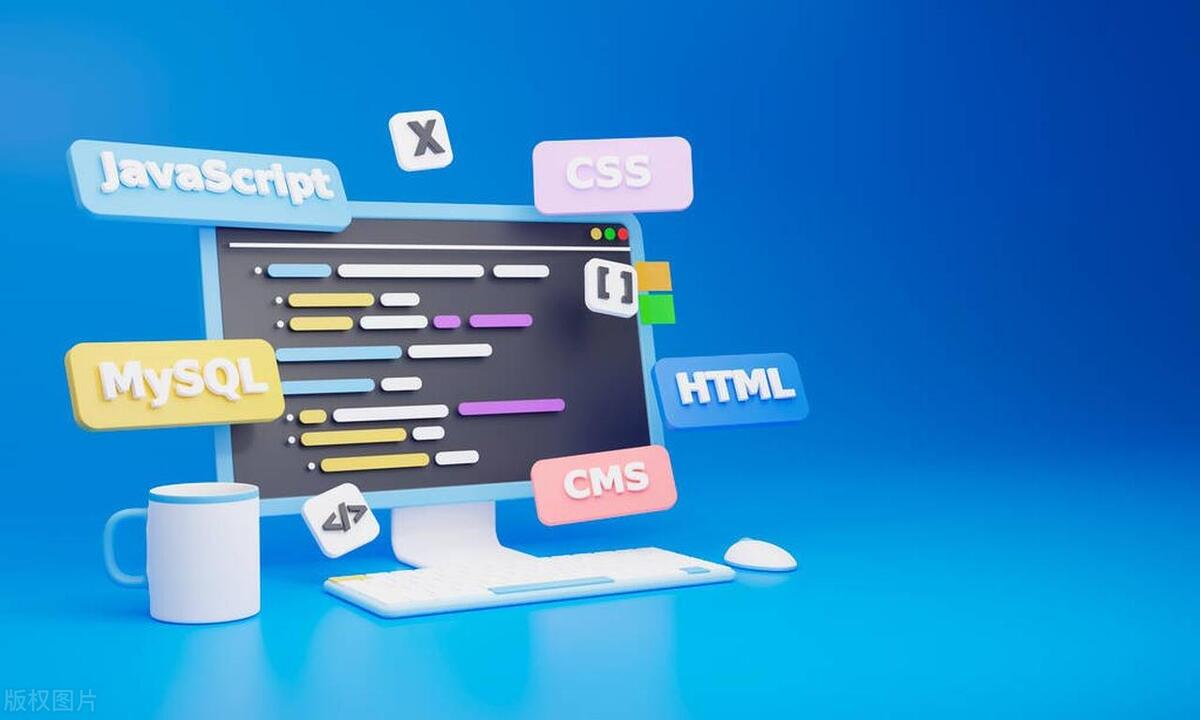Automating the front-end development process with Gulp saves time and reduces errors. The main steps include: installing the global Gulp CLI; initializing the project and installing local Gulp; creating gulpfile.js configuration tasks; configuring common tasks such as compressing CSS/JS, compiling Sass/Less, image optimization and automatic refresh of the browser; combining task flow and paying attention to path writing, plug-in version matching and task order. Organize tasks in serial or parallel ways, such as first compiling Sass and then starting the server to listen for file changes, achieving efficient development.

In the workflow of front-end development, there are many repetitive tasks, such as compressing CSS and JS files, image optimization, file merging, and even automatic browser refresh. Handling these things manually is not only time consuming, but also prone to errors. Using Gulp to automate these processes can save a lot of energy and improve efficiency a lot.

Install Gulp and initialize the project
To start using Gulp, you must first install it in the project. Gulp is based on Node.js, so you have to have Node.js and npm (or yarn) environments first.
The installation steps are roughly as follows:

- Install the global Gulp CLI:
npm install --global gulp-cli - Run
npm init -yinitialize package.json in the project root directory - Install local Gulp:
npm install gulp --save-dev
After the installation is completed, create a gulpfile.js file, which is the configuration file of Gulp, and all tasks will be written here.
Common automation tasks configuration methods
Gulp is a task, where you can define multiple tasks to handle different types of files. Common tasks include:

Compressing CSS and JS files
Usegulp-clean-cssandgulp-uglifyplugins to process CSS and JS files respectively to reduce file size and improve loading speed.Automatically compile Sass or Less
If you are using Sass or Less, you can use thegulp-sassorgulp-lessplugin to automatically compile it into CSS when saving.Picture optimization
Images are often large in size, and usinggulp-imageminplug-in can compress images without significantly affecting the image quality.Listen to file changes and refresh the browser automatically
Usegulp-watchwithbrowser-syncplug-in to automatically refresh the page after monitoring file changes, saving time for manual refresh.
These plug-ins are basically installed with npm install 插件名--save-dev , and then introduced and configured in gulpfile.js .
Organizational task process and operation mode
Gulp supports serial and parallel execution of tasks. You can combine multiple tasks into a process, such as starting a default task during development, listening to file changes and starting a local server.
Let's give a simple example:
const { series, parallel, watch } = require('gulp');
const sass = require('gulp-sass');
const browserSync = require('browser-sync').create();
function compileSass() {
return gulp.src('src/scss/**/*.scss')
.pipe(sass())
.pipe(gulp.dest('dist/css'))
.pipe(browserSync.stream());
}
function reload(done) {
browserSync.reload();
done();
}
function serve() {
browserSync.init({
server: './dist'
});
watch('src/scss/**/*.scss', compileSass);
watch('dist/*.html', reload);
}
exports.default = series(compileSass, serve);The above code means: first compile Sass once, then start the local server and listen to file changes, and automatically compile and refresh the browser.
Some easily overlooked but critical details
- Path writing is prone to errors : Gulp is more sensitive to file paths, especially the use of wildcard characters. For example,
**/*.scssmeans recursively searching for.scssfiles in all subdirectories. - Plugin versions need to match : Some plugins only support specific versions of Gulp, such as the APIs of Gulp 3 and Gulp 4 are quite different, so pay attention to the version number when installing.
- Task execution order : If there is a dependency between tasks, remember to use
series()to clarify the order, otherwise the expected result may not be executed. - Clear task naming : It is recommended to use
gulp.task('build-js')to name tasks to facilitate debugging and execution.
Basically that's it. Gulp's learning curve is not steep, but it can save a lot of time if used properly. At the beginning, you can start with a few common tasks and slowly expand them, without having to make it complicated at the beginning.
The above is the detailed content of Automating Frontend Development Workflows with Gulp. For more information, please follow other related articles on the PHP Chinese website!

Hot AI Tools

Undress AI Tool
Undress images for free

Undresser.AI Undress
AI-powered app for creating realistic nude photos

AI Clothes Remover
Online AI tool for removing clothes from photos.

Clothoff.io
AI clothes remover

Video Face Swap
Swap faces in any video effortlessly with our completely free AI face swap tool!

Hot Article

Hot Tools

Notepad++7.3.1
Easy-to-use and free code editor

SublimeText3 Chinese version
Chinese version, very easy to use

Zend Studio 13.0.1
Powerful PHP integrated development environment

Dreamweaver CS6
Visual web development tools

SublimeText3 Mac version
God-level code editing software (SublimeText3)
 How does React handle focus management and accessibility?
Jul 08, 2025 am 02:34 AM
How does React handle focus management and accessibility?
Jul 08, 2025 am 02:34 AM
React itself does not directly manage focus or accessibility, but provides tools to effectively deal with these issues. 1. Use Refs to programmatically manage focus, such as setting element focus through useRef; 2. Use ARIA attributes to improve accessibility, such as defining the structure and state of tab components; 3. Pay attention to keyboard navigation to ensure that the focus logic in components such as modal boxes is clear; 4. Try to use native HTML elements to reduce the workload and error risk of custom implementation; 5. React assists accessibility by controlling the DOM and adding ARIA attributes, but the correct use still depends on developers.
 Describe the difference between shallow and full rendering in React testing.
Jul 06, 2025 am 02:32 AM
Describe the difference between shallow and full rendering in React testing.
Jul 06, 2025 am 02:32 AM
Shallowrenderingtestsacomponentinisolation,withoutchildren,whilefullrenderingincludesallchildcomponents.Shallowrenderingisgoodfortestingacomponent’sownlogicandmarkup,offeringfasterexecutionandisolationfromchildbehavior,butlacksfulllifecycleandDOMinte
 What is the significance of the StrictMode component in React?
Jul 06, 2025 am 02:33 AM
What is the significance of the StrictMode component in React?
Jul 06, 2025 am 02:33 AM
StrictMode does not render any visual content in React, but it is very useful during development. Its main function is to help developers identify potential problems, especially those that may cause bugs or unexpected behavior in complex applications. Specifically, it flags unsafe lifecycle methods, recognizes side effects in render functions, and warns about the use of old string refAPI. In addition, it can expose these side effects by intentionally repeating calls to certain functions, thereby prompting developers to move related operations to appropriate locations, such as the useEffect hook. At the same time, it encourages the use of newer ref methods such as useRef or callback ref instead of string ref. To use Stri effectively
 Vue with TypeScript Integration Guide
Jul 05, 2025 am 02:29 AM
Vue with TypeScript Integration Guide
Jul 05, 2025 am 02:29 AM
Create TypeScript-enabled projects using VueCLI or Vite, which can be quickly initialized through interactive selection features or using templates. Use tags in components to implement type inference with defineComponent, and it is recommended to explicitly declare props and emits types, and use interface or type to define complex structures. It is recommended to explicitly label types when using ref and reactive in setup functions to improve code maintainability and collaboration efficiency.
 Server-Side Rendering with Next.js Explained
Jul 23, 2025 am 01:39 AM
Server-Side Rendering with Next.js Explained
Jul 23, 2025 am 01:39 AM
Server-siderendering(SSR)inNext.jsgeneratesHTMLontheserverforeachrequest,improvingperformanceandSEO.1.SSRisidealfordynamiccontentthatchangesfrequently,suchasuserdashboards.2.ItusesgetServerSidePropstofetchdataperrequestandpassittothecomponent.3.UseSS
 A Deep Dive into WebAssembly (WASM) for Front-End Developers
Jul 27, 2025 am 12:32 AM
A Deep Dive into WebAssembly (WASM) for Front-End Developers
Jul 27, 2025 am 12:32 AM
WebAssembly(WASM)isagame-changerforfront-enddevelopersseekinghigh-performancewebapplications.1.WASMisabinaryinstructionformatthatrunsatnear-nativespeed,enablinglanguageslikeRust,C ,andGotoexecuteinthebrowser.2.ItcomplementsJavaScriptratherthanreplac
 Vue CLI vs Vite: Choosing Your Build Tool
Jul 06, 2025 am 02:34 AM
Vue CLI vs Vite: Choosing Your Build Tool
Jul 06, 2025 am 02:34 AM
Vite or VueCLI depends on project requirements and development priorities. 1. Startup speed: Vite uses the browser's native ES module loading mechanism, which is extremely fast and cold-start, usually completed within 300ms, while VueCLI uses Webpack to rely on packaging and is slow to start; 2. Configuration complexity: Vite starts with zero configuration, has a rich plug-in ecosystem, which is suitable for modern front-end technology stacks, VueCLI provides comprehensive configuration options, suitable for enterprise-level customization but has high learning costs; 3. Applicable project types: Vite is suitable for small projects, rapid prototype development and projects using Vue3, VueCLI is more suitable for medium and large enterprise projects or projects that need to be compatible with Vue2; 4. Plug-in ecosystem: VueCLI is perfect but has slow updates,
 How to manage component state using immutable updates in React?
Jul 10, 2025 pm 12:57 PM
How to manage component state using immutable updates in React?
Jul 10, 2025 pm 12:57 PM
Immutable updates are crucial in React because it ensures that state changes can be detected correctly, triggering component re-rendering and avoiding side effects. Directly modifying state, such as push or assignment, will cause React to be unable to detect changes. The correct way to do this is to create new objects instead of old objects, such as updating an array or object using the expand operator. For nested structures, you need to copy layer by layer and modify only the target part, such as using multiple expansion operators to deal with deep attributes. Common operations include updating array elements with maps, deleting elements with filters, adding elements with slices or expansion. Tool libraries such as Immer can simplify the process, allowing "seemingly" to modify the original state but generate new copies, but increase project complexity. Key tips include each






